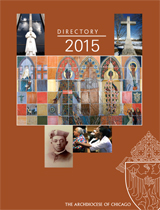May 24, 2009
Catholic schools to reorganize, focus on early childhood
When classes begin next August, two parishes will offer new early childhood education programs aimed at children ages 3 to 8, said Dominican Sister Mary Paul Mc- Caughey, the superintendent of Catholic schools.
The programs will be at St. Mary of Czestochowa in Cicero and St. Priscilla, 7001 W. Addison St.
Both will be in facilities that up until this spring housed traditional Catholic schools. Those schools are closing because of declining enrollment or financial difficulties.
“They will be reborn as something new,” McCaughey said.
Also closing in June are Our Lady of the Gardens School, 13300 S. Langley, which had been operated with the assistance of Maryville Academy, and St. Beatrice in Schiller Park. Our Lady of the Gardens will reopen in the fall as a public charter school, while students who desire to continue with a Catholic education have been offered scholarships at nearby parochial schools.
The two early childhood centers can thrive and help revitalize Catholic schools, McCaughey said.
“Early childhood is a way to revitalize the schools,” she said. “You can start again from the bottom and we can get some funding [through the Title I “Preschool for All” program].”
As the early childhood centers develop, they can either send their students on to other area Catholic schools, or add grades in areas where there aren’t other Catholic schools close by.
At St. Mary of Czestochowa in Cicero, the new school will be part of a three-school consortium with Our Lady of Charity and St. Frances of Rome. The group, to be called Catholic Schools of Cicero, will be run by executive principal Clem Martin, now the principal at St. Frances of Rome, and a single board of specified jurisdiction.
The St. Mary building will offer 3- and 4-year-old preschool, starting with a classroom for 20 students, and an ungraded program for children ages 5 to 8.
Meanwhile, Our Lady of Charity and St. Frances of Rome will continue to offer preschool through eighth grade. The hope is that students will move to one of the other Catholic schools when they finish at St. Mary, Martin said.
At the same time, the school at St. Mary will house special education services for Catholic school students, provided by United Stand, Martin said.
Martin said he thinks clustering Catholic schools in other areas could work because it will allow the schools to share resources, especially in terms of professional development and using community resources, and short-circuit the competition for students and funding between neighboring schools.
St. Priscilla will open the Academy of St. Priscilla, where a board of specified jurisdiction will operate a school offering a Montessorilike program for students ages 3 to 8, who will each be encouraged to learn at their own pace, McCaughey said.
Albert Schorsh III, who will chair the board at St. Priscilla, said the differentiated instruction and project-based curriculum make it possible for the school to offer the best practices in education while also being financially flexible.
The structure allows students to be grouped by ability and interest. Students will be seated together at tables instead of alone at desks, and even the young ones will work on laptop computers, he said.
The board, which was recruited by parents at the closing St. Priscilla School, settled on the program after visiting several schools. The new school has the support of St. Priscilla pastor Father Idzi Stacherczak.
The other thing the board learned from Catholic schools that have been successful was the need for sustained marketing efforts.
“Those schools were leafletting the whole community every three weeks during the period when they were promoting their schools,” Schorsh said. “We found a lot of young families that we didn’t know were there. And a lot of them are Catholic and open to sending their kids to a Catholic school for preschool.”
 Catholic
New World - Newspaper for the Archdiocese of Chicago
Catholic
New World - Newspaper for the Archdiocese of Chicago Archdiocese of Chicago Directory
Archdiocese of Chicago Directory Oficjalne wydawnictwo Archidiecezji Chicago w języku polskim
Oficjalne wydawnictwo Archidiecezji Chicago w języku polskim